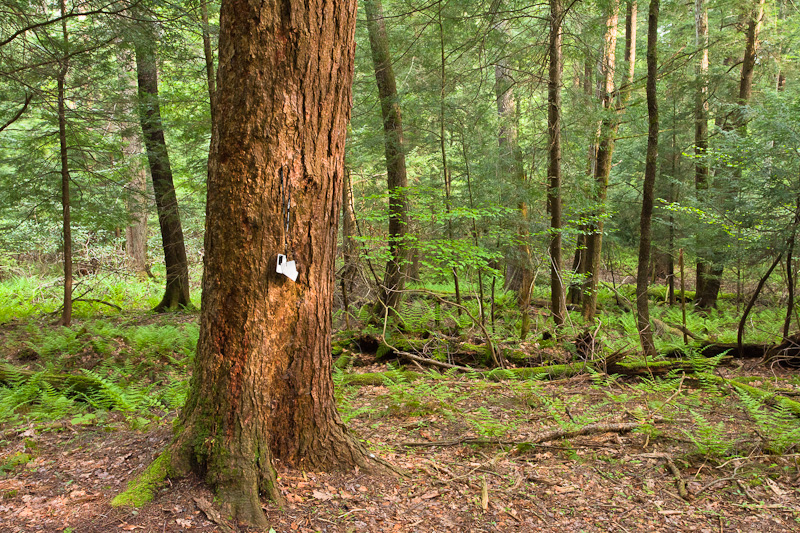Workshop Exercises: Interpreting the Scene
Below are some comments I wrote in a follow-up to our workshop students from Flowing Water held one week ago. We work on many skill enhancement exercises while in the field. This particular exercise reinforces the importance of interpreting the scene as one feels it and sees it vs. how the camera sees the scene. Here are the comments regarding a specific forest scene in which we were photographing.
One particular skill we we worked on involved interpreting the scene. Sometimes we must reconcile what the camera "sees" with what we are "seeing and feeling" at the moment of capture. We discussed the importance of noting when the camera records a scene in a way that is radically different from the one you experienced.  You may recall one particular scene that really exemplified the importance of noting the differences between what the eye sees vs. what the camera records. The scene pictured here is from Cathedral Forest where we had moments of very nice warm morning light. The left image is exactly how the camera interpreted the scene. While you were reviewing the image on your LCD screen you may have wondered "why does this light seem much brighter and less colorful than what I am seeing?" Many times we are photographing in mixed light. Just like in this scene where we have cool open shade light as well as direct horizontal morning light. It is very challenging for the camera to automatically interpret the scene accurately, let alone how we felt in the scene at the moment of capture. That is really what it is about, capturing the scene as we saw and felt it at the moment of capture. There is no doubt that the light was very nice in this scene and we all responded to it by taking photos.
You may recall one particular scene that really exemplified the importance of noting the differences between what the eye sees vs. what the camera records. The scene pictured here is from Cathedral Forest where we had moments of very nice warm morning light. The left image is exactly how the camera interpreted the scene. While you were reviewing the image on your LCD screen you may have wondered "why does this light seem much brighter and less colorful than what I am seeing?" Many times we are photographing in mixed light. Just like in this scene where we have cool open shade light as well as direct horizontal morning light. It is very challenging for the camera to automatically interpret the scene accurately, let alone how we felt in the scene at the moment of capture. That is really what it is about, capturing the scene as we saw and felt it at the moment of capture. There is no doubt that the light was very nice in this scene and we all responded to it by taking photos.  So what can we do? In this case it is a simple technical adjustment that can make all of the difference. The camera recorded the scene with a temperature of 3839 and a tint of 24. As you can see I hung the White Balance card in the scene where the light was touching the tree. Simply using this card as my white balance reference the scene changes completely to the accurate presentation in the image on the right. Now the temperature is 4850 and the tint is 15. The white balance card doesn't always work, but in this case I think it has done a nice job in interpreting the scene of warm morning light with the greens of the forest.
So what can we do? In this case it is a simple technical adjustment that can make all of the difference. The camera recorded the scene with a temperature of 3839 and a tint of 24. As you can see I hung the White Balance card in the scene where the light was touching the tree. Simply using this card as my white balance reference the scene changes completely to the accurate presentation in the image on the right. Now the temperature is 4850 and the tint is 15. The white balance card doesn't always work, but in this case I think it has done a nice job in interpreting the scene of warm morning light with the greens of the forest.
This is just one example of the skill enhancement exercises we worked on during our time together. I encourage you to continue to utilize the skill enhancement exercises in your daily photographic adventures. Again if you need any other help we can work together either via VOIP or phone or you can attend another workshop.
